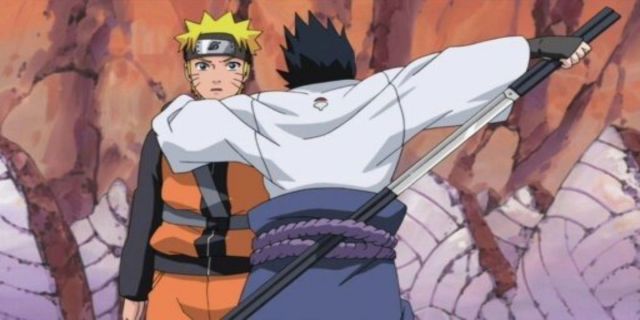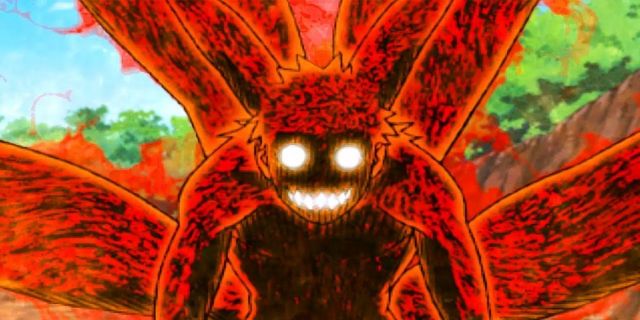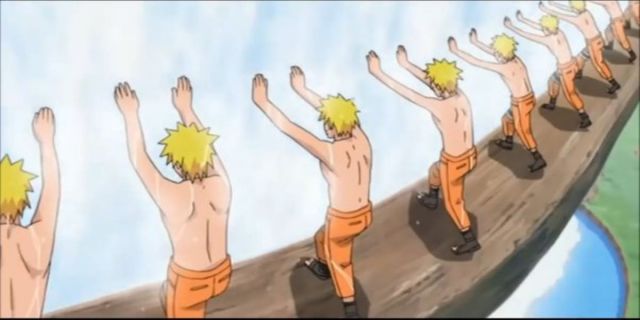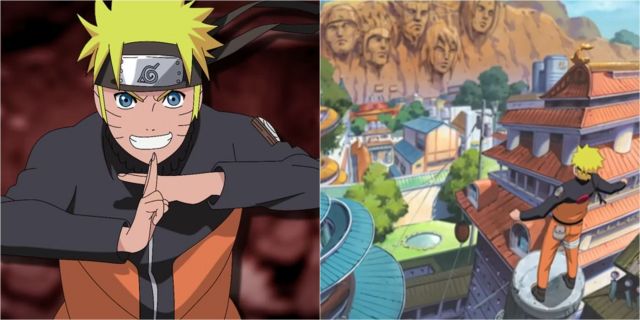Highlights
- Naruto’s lack of significant growth after the timeskip is disappointing to fans, as other characters experienced considerable development.
- Naruto’s limited arsenal and lack of new abilities post-timeskip raise questions about his strength compared to his peers.
- Naruto’s training with Jiraiya to tame the Nine-Tails was ultimately pointless, wasting valuable time that could have been spent on honing his skills.
Timeskips are a common element in long-running shonen anime, as they serve the purpose of allowing the story to progress without forcing the author to narrate the mundane parts. The Naruto series also employs this concept after the conclusion of part 1, giving characters some breathing room to grow and develop without doing much legwork. While most characters came out stronger and more refined, one character in particular, the series’ protagonist, seemed rather lackluster.
Despite his inherent power, Naruto’s arsenal had always been limited, and fans were hoping to see a bit more versatility after the two-year timeskip. The rest of Konoha 11 experienced tremendous growth, both in terms of characterization and skill. Naruto, on the other hand, remained more or less the same, with only some refinement in terms of overall ninja skills. While fans may have been disappointed by the lack of growth, there are several plausible explanations that justify Naruto’s status post-timeskip.
RELATED: Naruto: Every Hokage’s Signature Jutsu, Explained
Was Naruto Truly Weak Post-Timeskip?

Naruto’s strength after the timeskip is a common topic of debate among the community. While some agree that Naruto’s improvements are rather meager, others argue that he grew considerably powerful. There’s no denying that Naruto underwent rigorous training and became much stronger than his former self after the timeskip, yet his overall development was immensely low compared to his peers.
Sasuke and the rest of Konoha 11 underwent a significant overhaul, and their newfound strength was more than apparent. Meanwhile, Naruto came back with the same overused arsenal of Rasengan and Shadow Clones, and even these abilities hadn’t improved from their initial forms. The most staggering aspect of his training was that he spent two years without learning about the concept of chakra natures.
Moreover, Jiraiya didn’t teach Naruto a single technique during the two years, evident from the fact that he could only use Rasengan and Shadow Clone Jutsu post-timeskip. His Rasengan also remained in his base form, with Naruto learning the Rasenshuriken and its other variants after returning to the Hidden Leaf. Overall, Naruto returned to the village almost the same as he left, with just a slight improvement in his mobility and fighting style.
Naruto and Jiraiya Wasted Time Taming the Nine-Tails

Most anime that include timeskips often fast-forward five to ten years, giving characters enough time to change considerably. In this case, Naruto was left with merely two years to train and become stronger, and with the sheer number of techniques and skills out there, it was almost impossible to cram everything in there. This was further exacerbated by the fact that most of Naruto’s training centered around taming the Nine-Tails and gaining control of its power.
Such training would surely have been beneficial for the young shinobi, but after months of training with no end in sight, Jiraiya eventually realized that utilizing the beast’s chakra would result in more harm than good. This was cemented by Naruto losing control and almost killing Jiraiya in the process, with the Sannin eventually warning Naruto to never utilize that untameable power again.
RELATED: Naruto: Why did Jiraiya Refuse to be Hokage?
This conclusion meant the entire training had become null and void, and the precious time spent on controlling the Nine-Tails was all in vain. With a considerable portion of their two-years lost to pointless training, Naruto had even less time to actually focus on honing his skills. This explains why Naruto’s primary arsenal remained exactly the same after the timeskip, albeit with just slight improvements.
Viewers Have to Witness the Protagonist’s Growth

From a storytelling perspective, sudden power-ups and borrowed power for a protagonist can often be viewed as unearned, and viewers have a hard time relating to the main character’s struggle. While this might fly for the antagonists or ancillary characters, a well-written protagonist has to undergo rigorous training to earn their power. This concept explains why Naruto learned almost all of his new jutsu and techniques after the timeskip.
If Naruto had acquired the Rasenshuriken during the timeskip, its impact would have been relatively low and viewers would simply have seen it as a free power-up. By witnessing Naruto train rigorously for hours on end, viewers could see the hardship he had to endure to earn this power, making it significantly more impactful and profound. Antagonists and side characters have some leeway in this matter, as showcasing every single aspect of their growth isn’t a necessity.
Chakra natures are a similar case, though another reason behind Naruto only learning about nature transformations post-timeskip was so that viewers could also witness and understand this concept. If Naruto had returned to the village with all these new powers in hand, fans would have simply viewed these abilities as unfair power-ups, further reducing his popularity and likability among viewers. Kishimoto has made several questionable moves in terms of Naruto’s storyline, yet this aspect of the series is rooted in logic and good storytelling.
Naruto is available to stream on Prime Video.











Leave a Reply